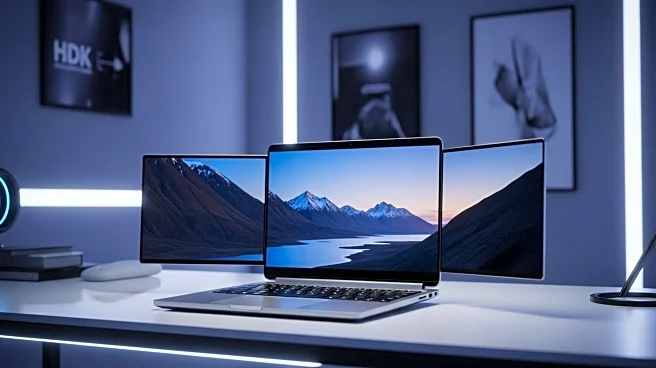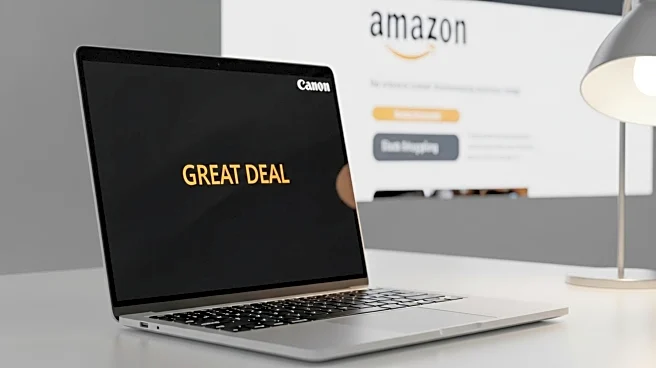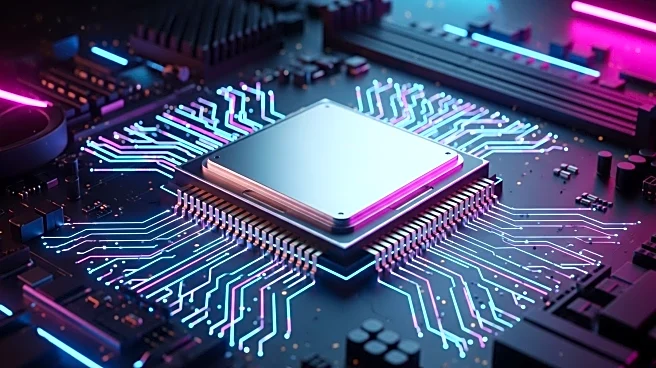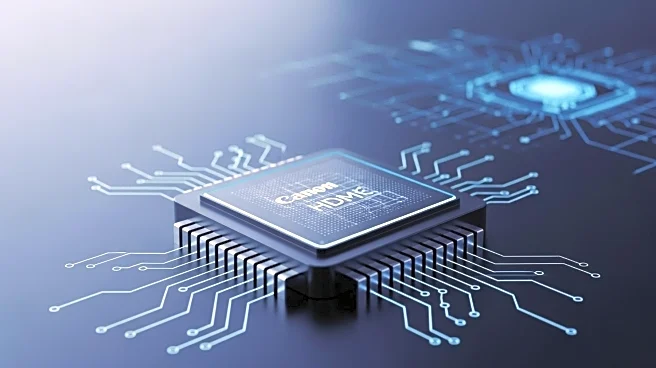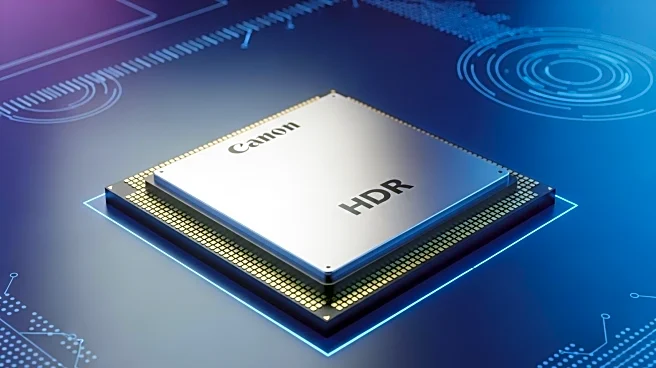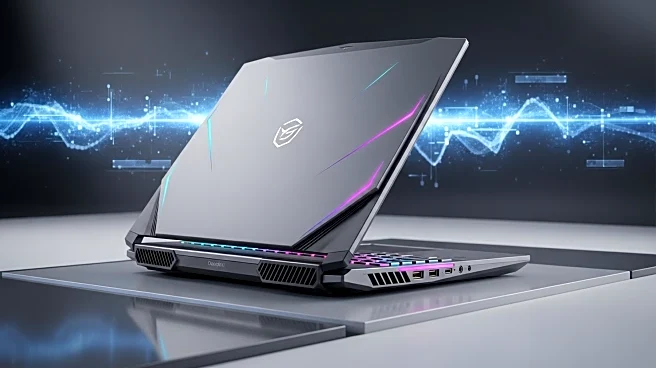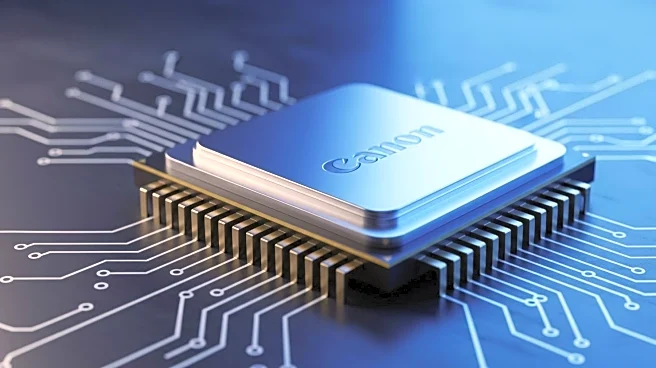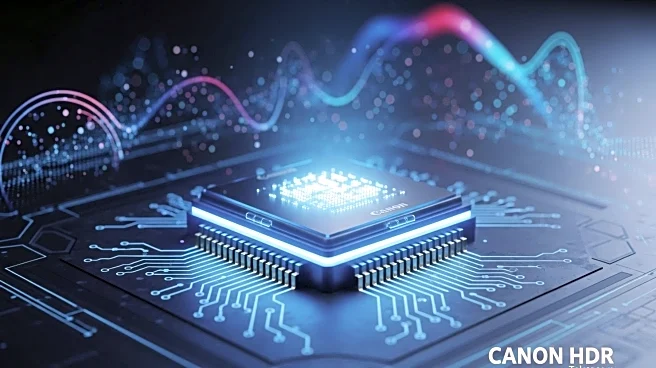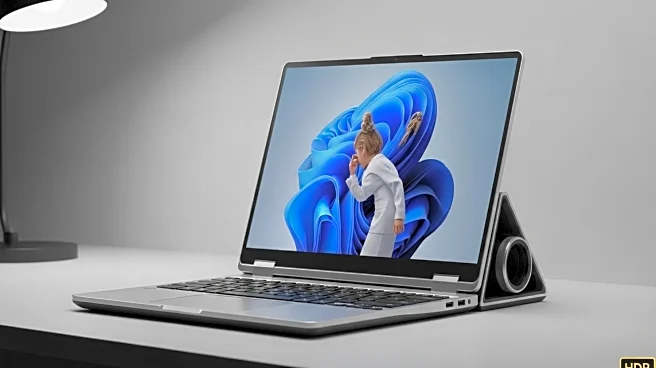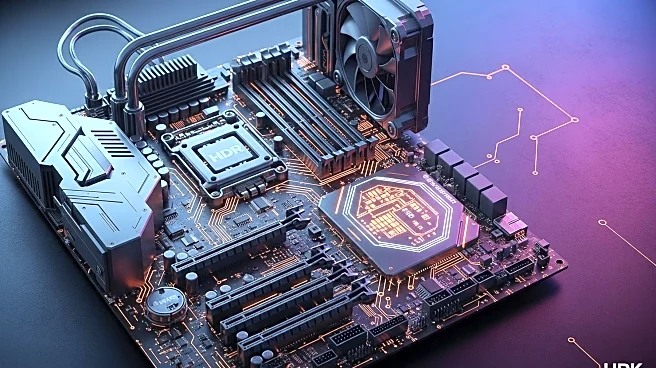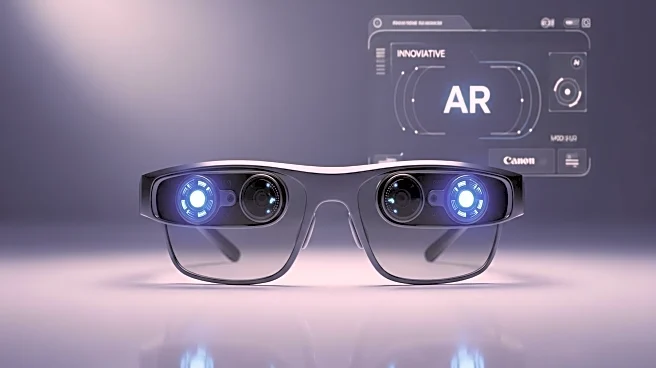What's Happening?
Byone has launched a triple-screen laptop, the Bax 16, on AliExpress, beating Razer's long-awaited Project Valerie to market. The laptop features a central 16-inch screen flanked by two 10.5-inch screens, which can fold over to fit the space of the main panel when closed. Priced at $1,100, it includes 16 GB of RAM, 256 GB SSD storage, and an Intel Core i7 1270P processor. Despite its innovative design, the laptop's ergonomics and screen alignment may pose challenges for users accustomed to traditional setups. The device is reportedly compatible with external GPUs, although it lacks the necessary ports.
Why It's Important?
The release of Byone's triple-screen laptop marks a significant development in portable computing, offering enhanced multitasking capabilities. This innovation could influence the laptop market by pushing competitors to explore similar designs, potentially leading to more versatile and productive devices. However, the high price point and ergonomic concerns may limit its appeal to niche markets, such as gaming and professional environments requiring extensive screen real estate. The competition between brands like Byone and Razer highlights the ongoing demand for cutting-edge technology in consumer electronics.
What's Next?
As Byone's Bax 16 enters the market, consumer feedback will likely shape future iterations of multi-screen laptops. Competitors may respond by refining their designs to address ergonomic issues and improve user experience. The success of Byone's product could encourage other manufacturers to invest in similar innovations, potentially leading to a broader range of options for consumers seeking enhanced productivity tools. Additionally, the integration of external GPUs may become a focal point for future developments in laptop technology.
Beyond the Headlines
The introduction of multi-screen laptops raises questions about the balance between innovation and practicality. While offering increased screen space, these devices must overcome challenges related to portability, battery life, and user comfort. The trend towards multi-screen setups reflects a broader shift in consumer preferences towards devices that support complex workflows and multitasking. As technology evolves, manufacturers must consider the long-term implications of such designs on user habits and productivity.
